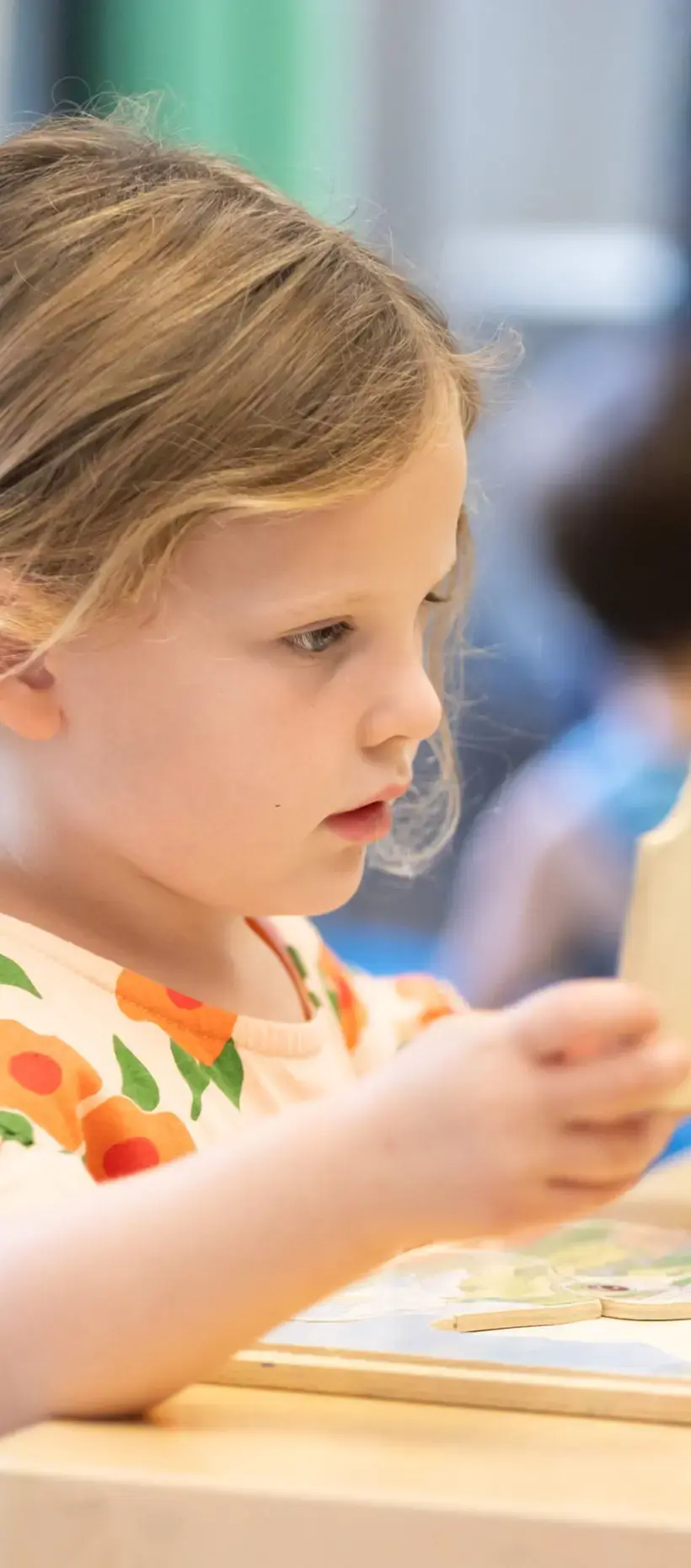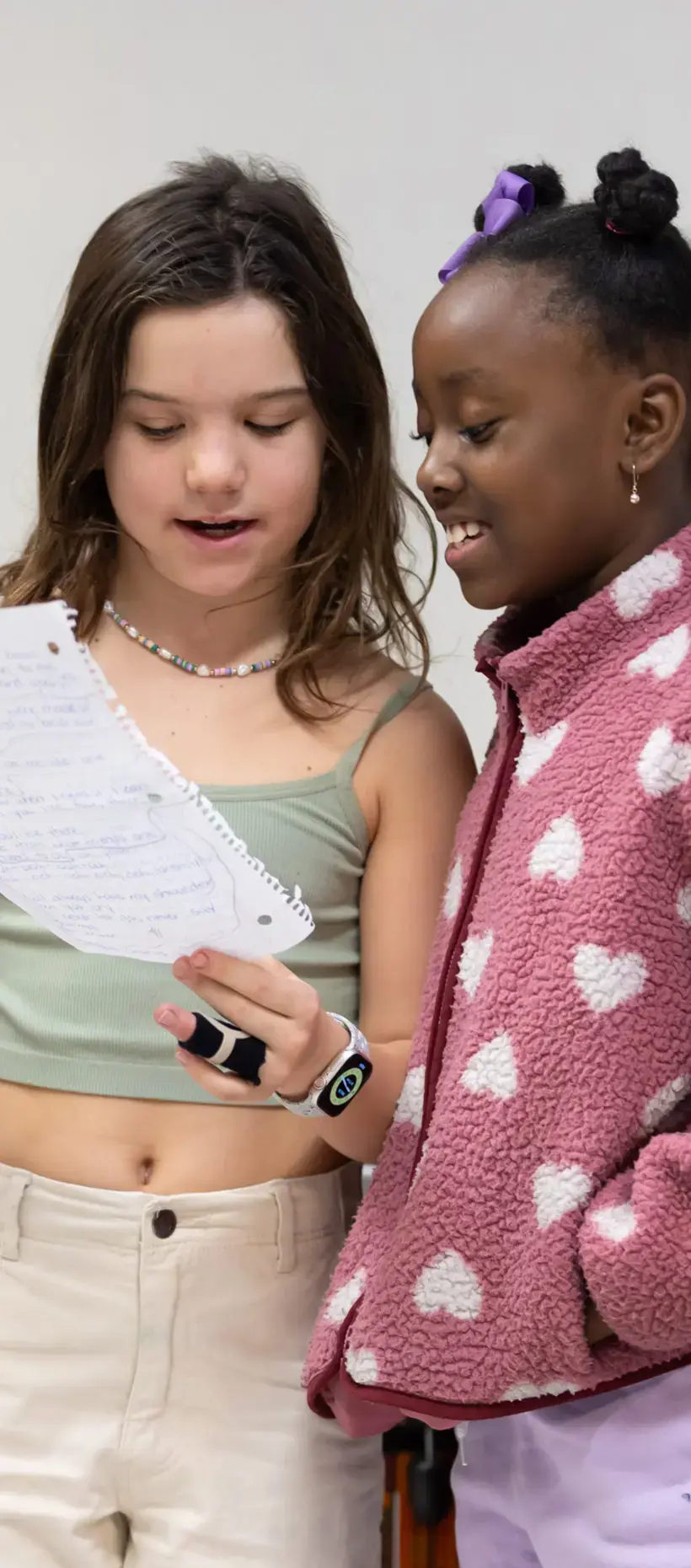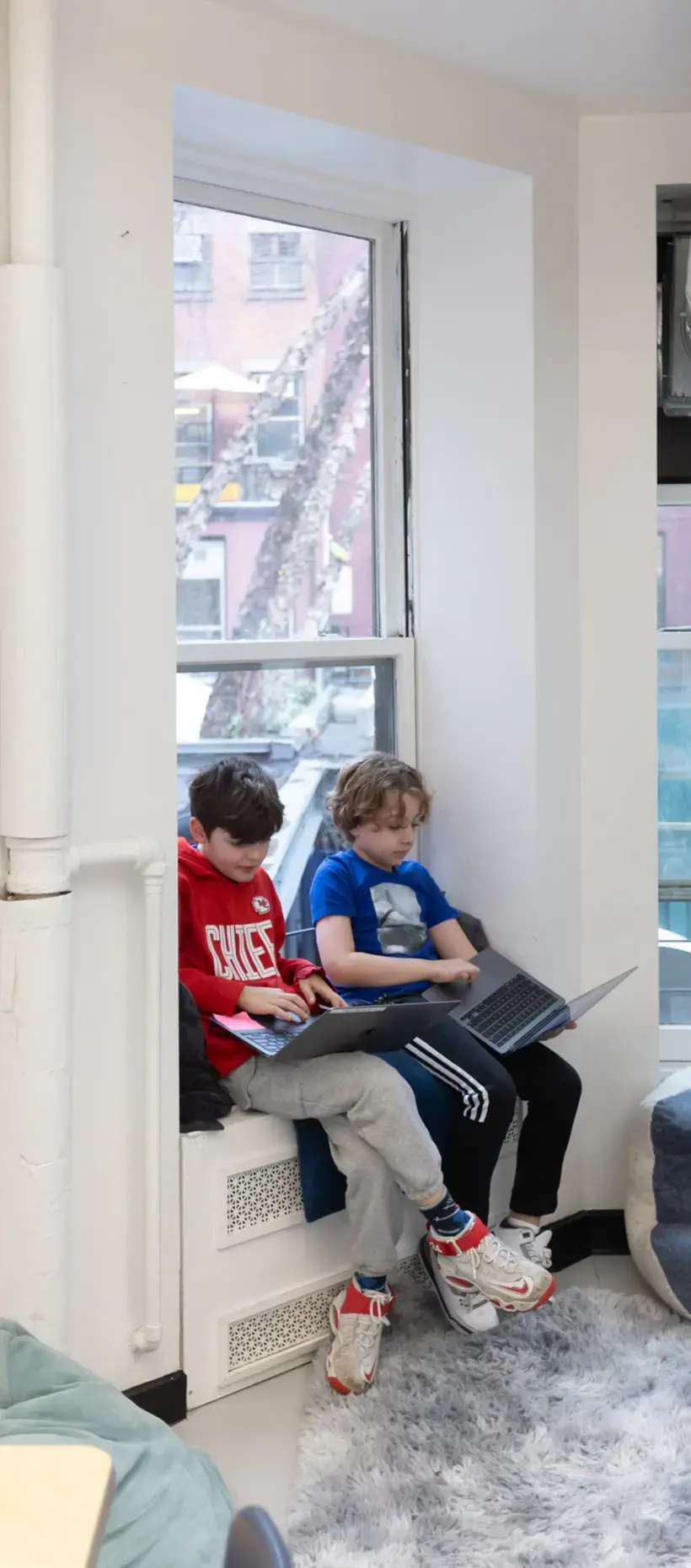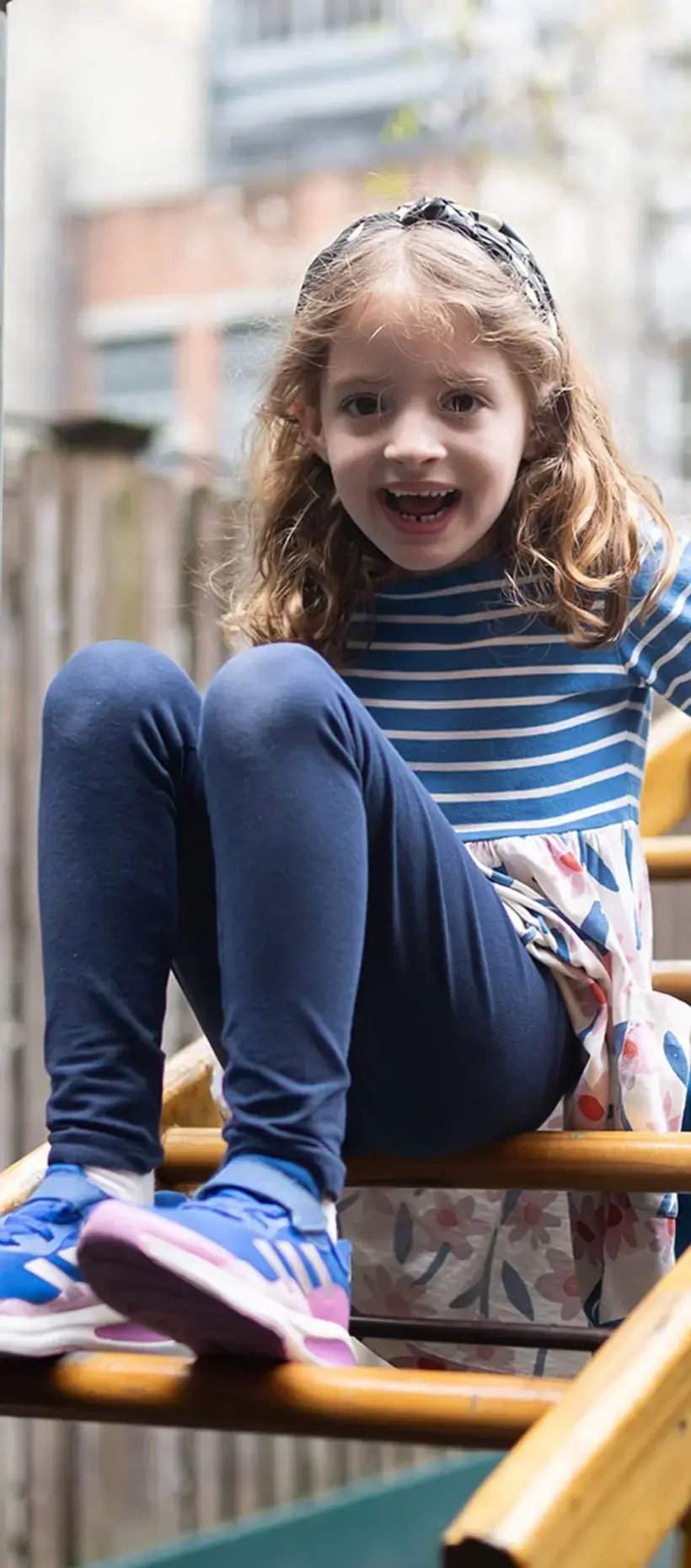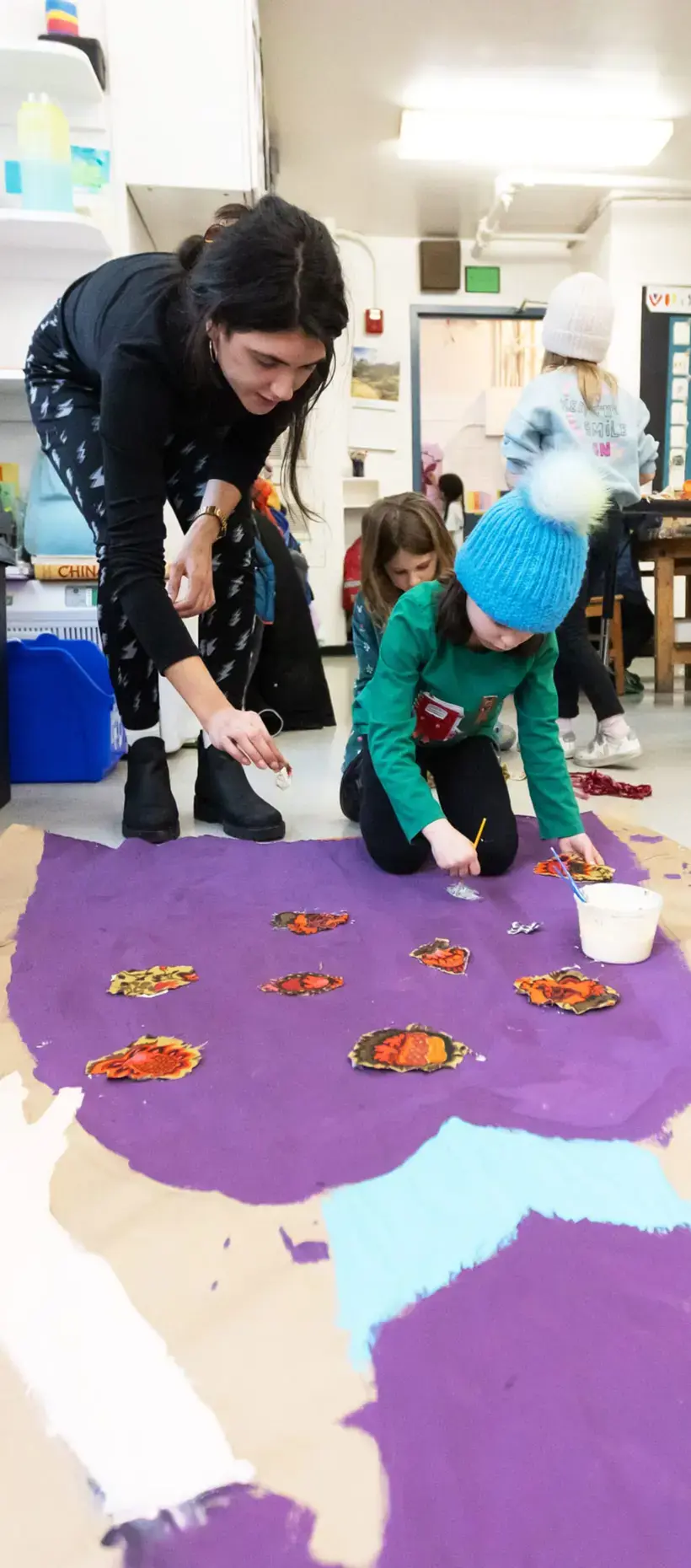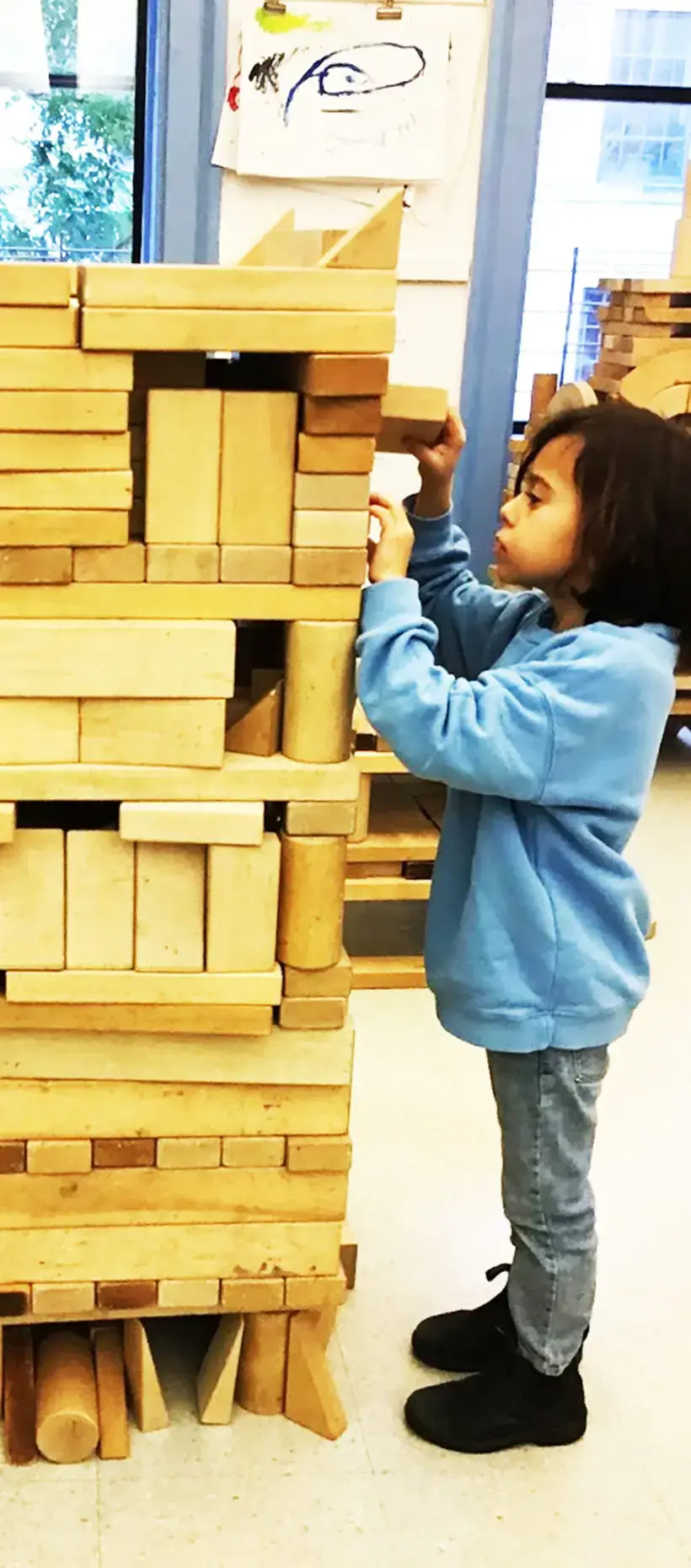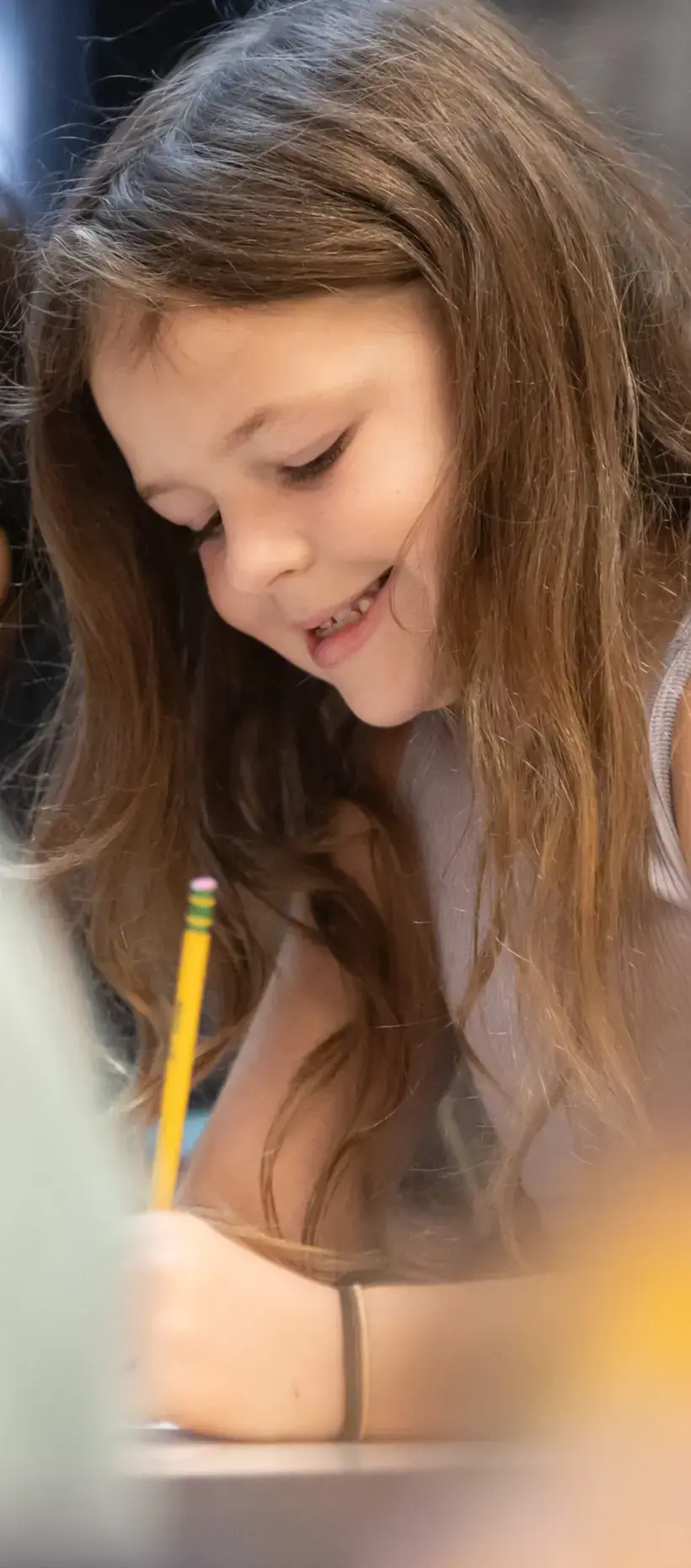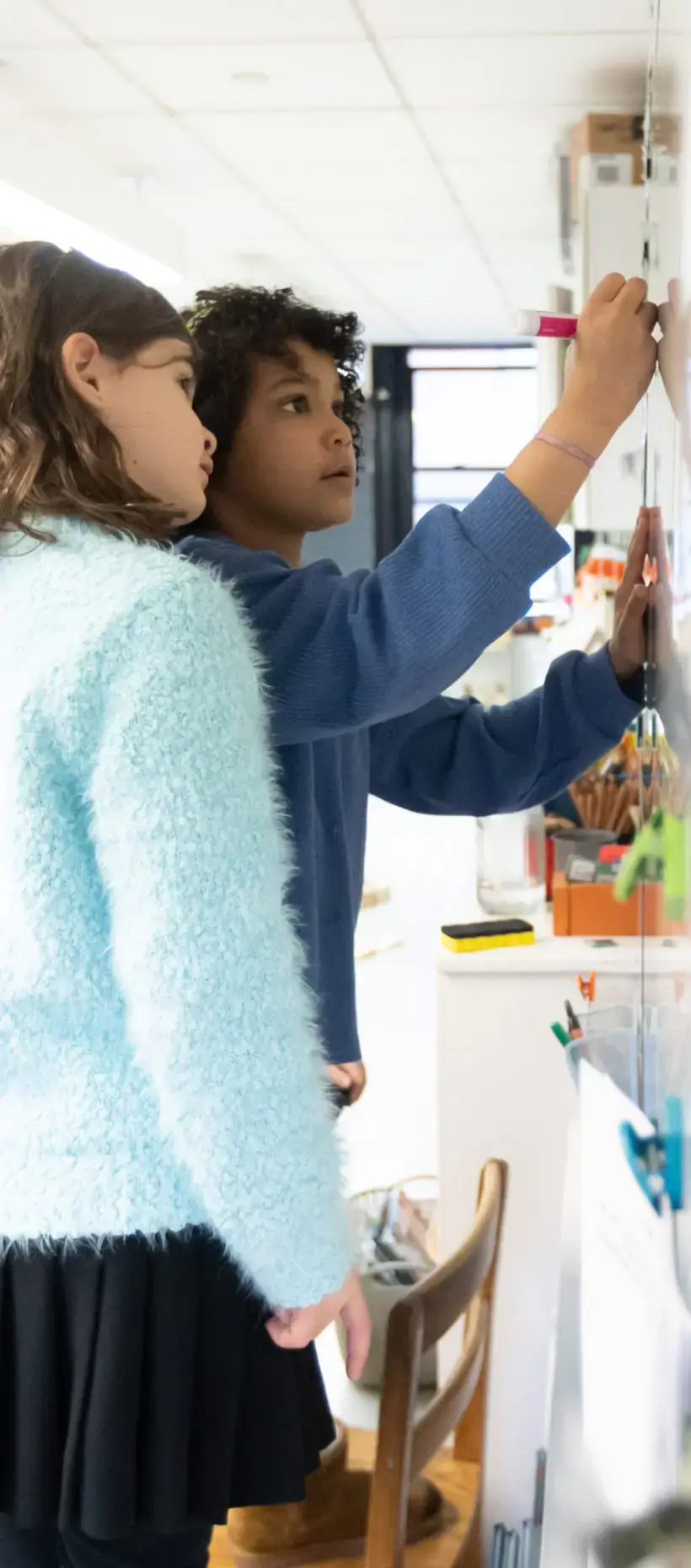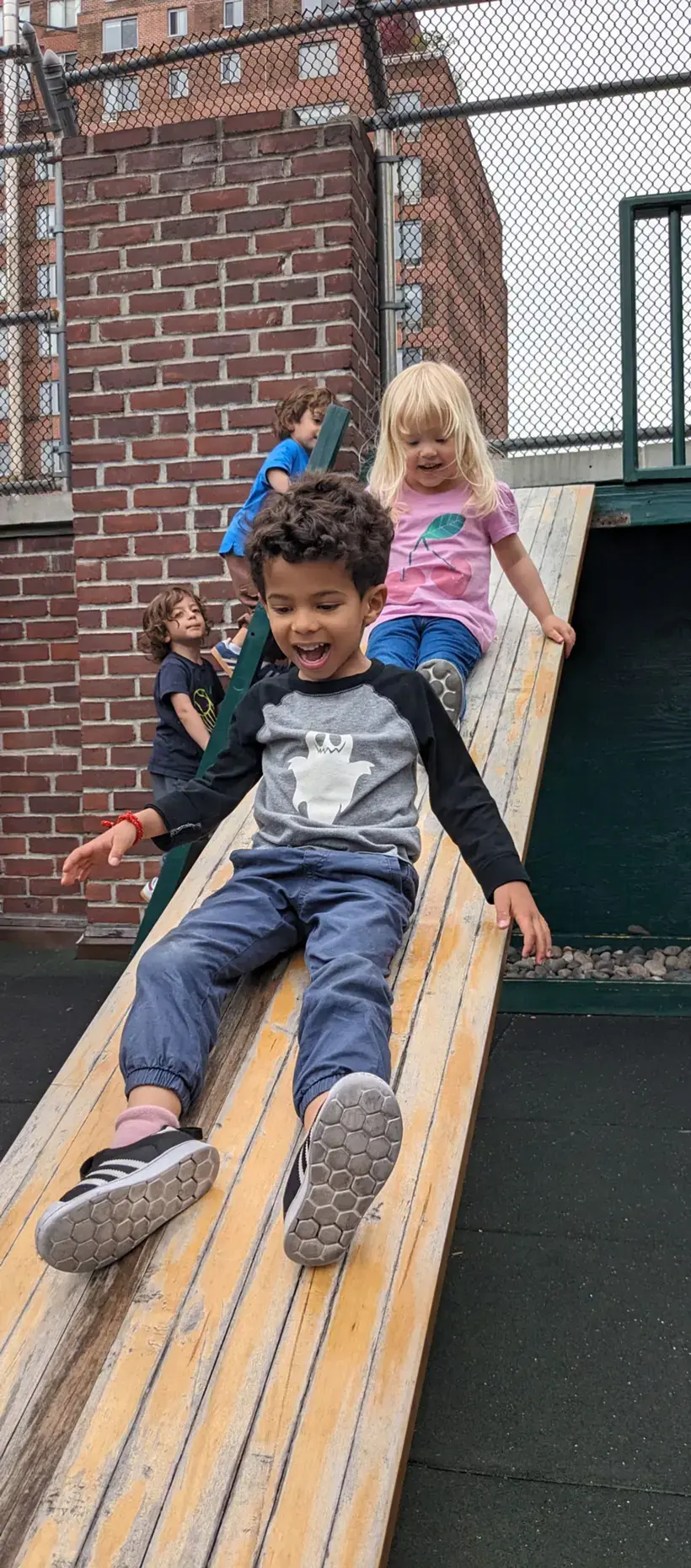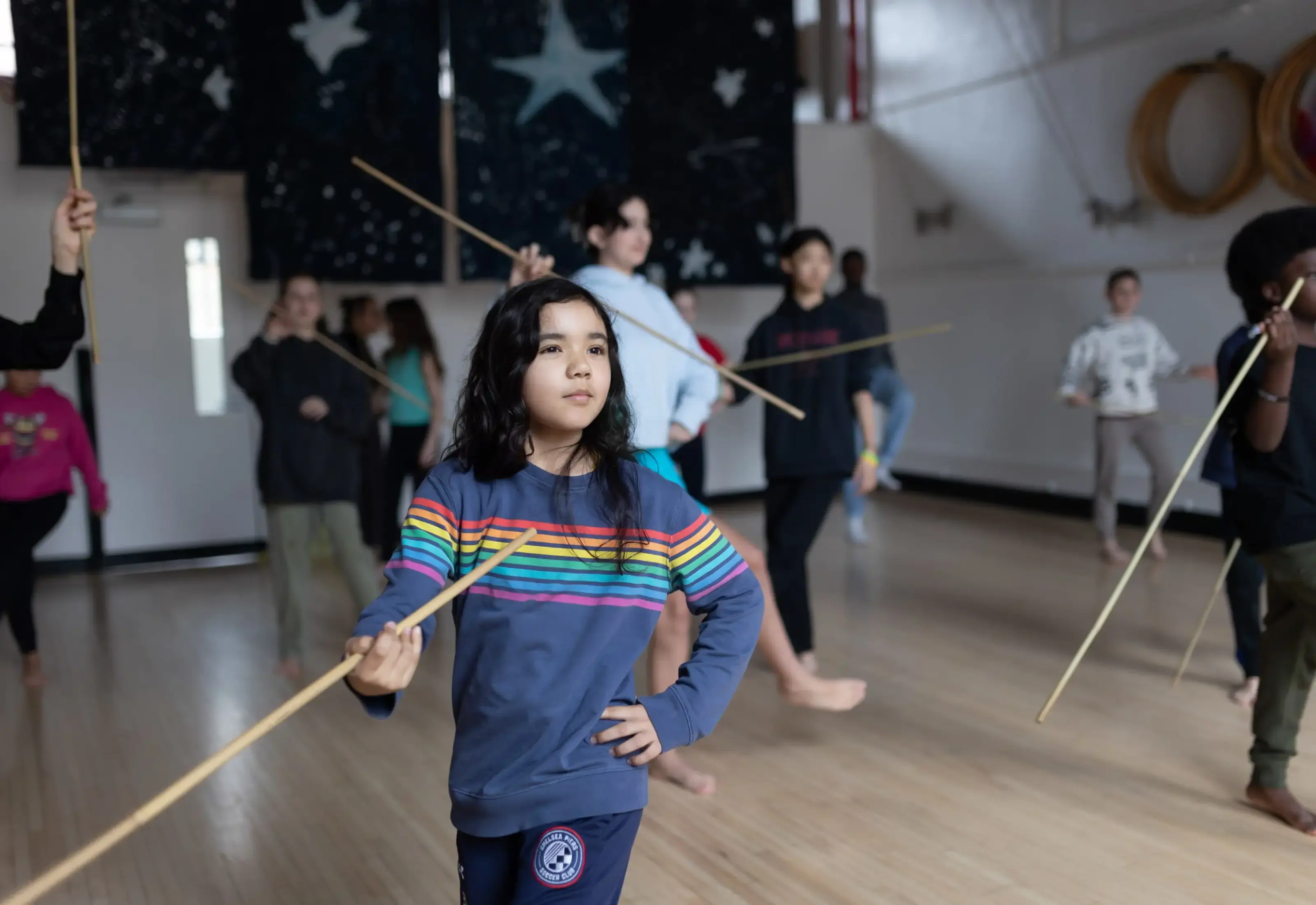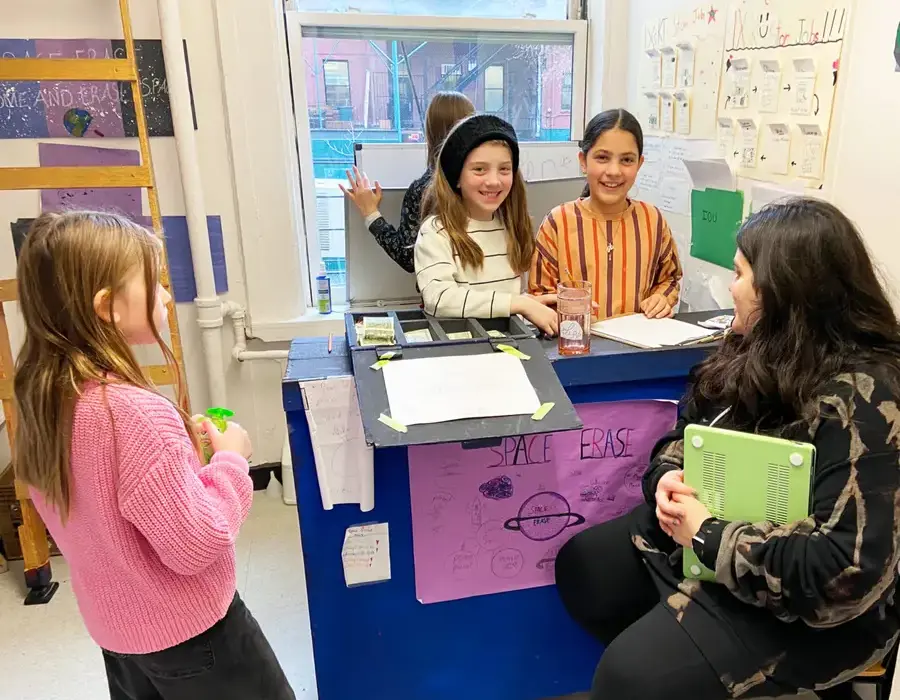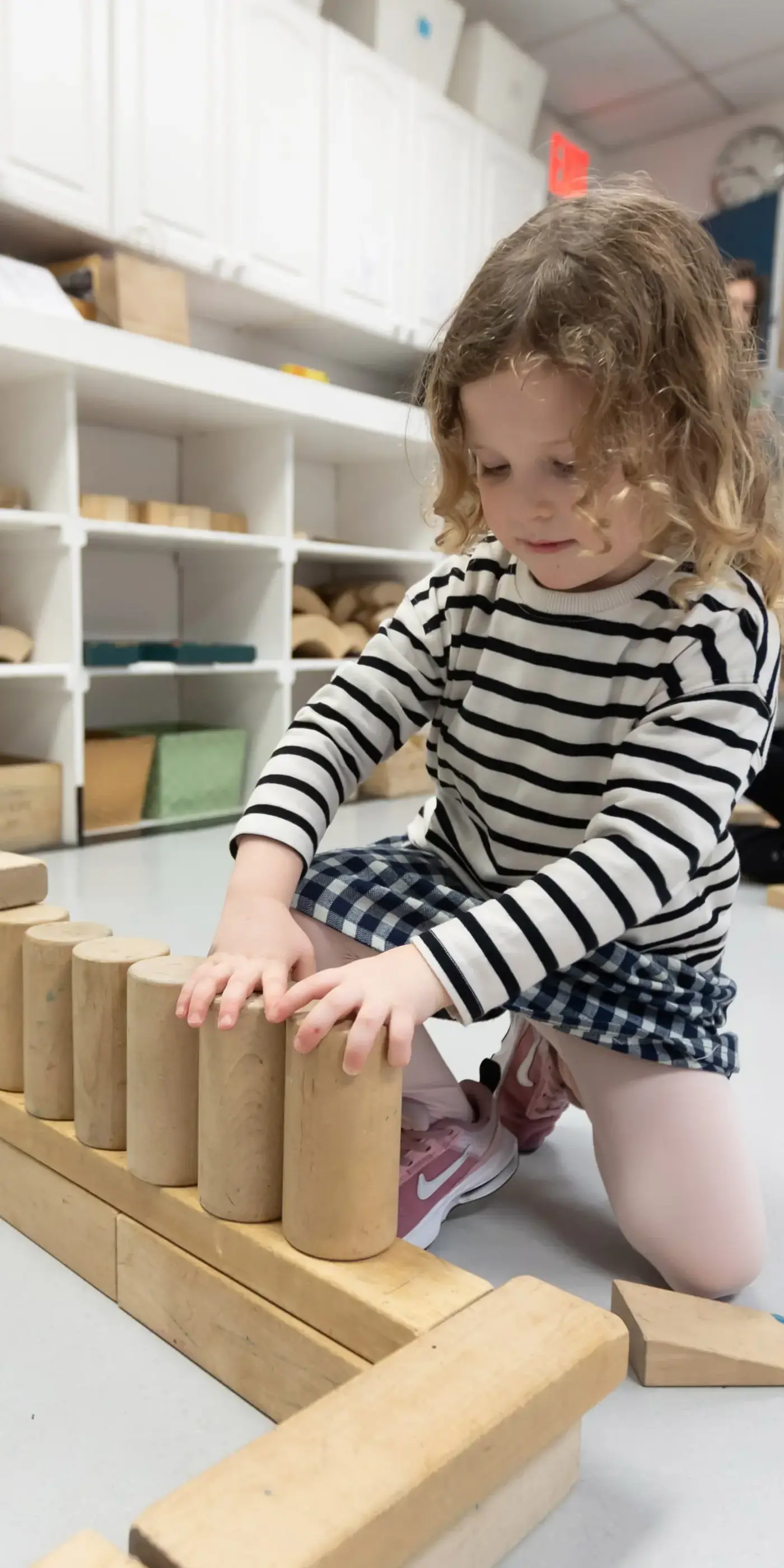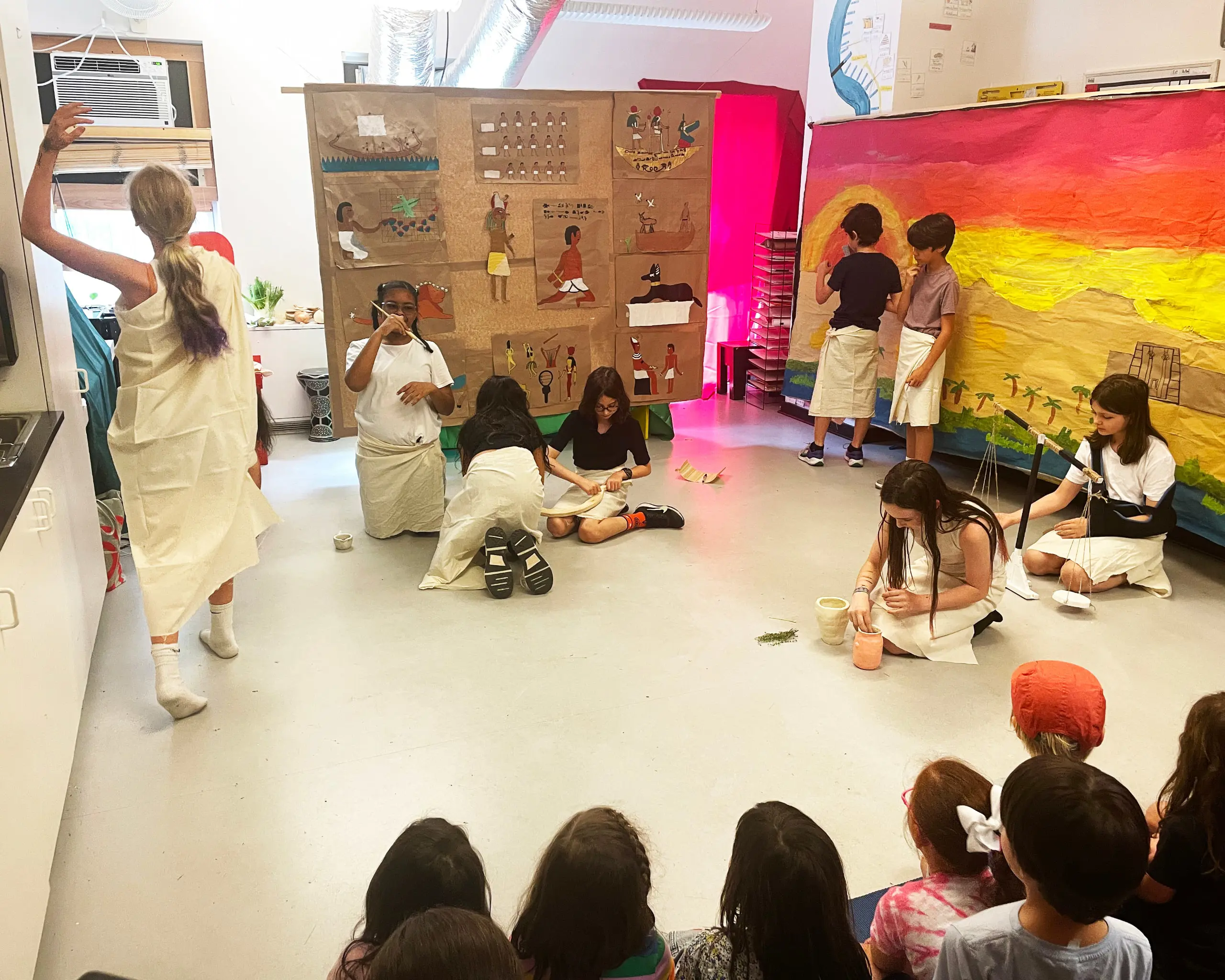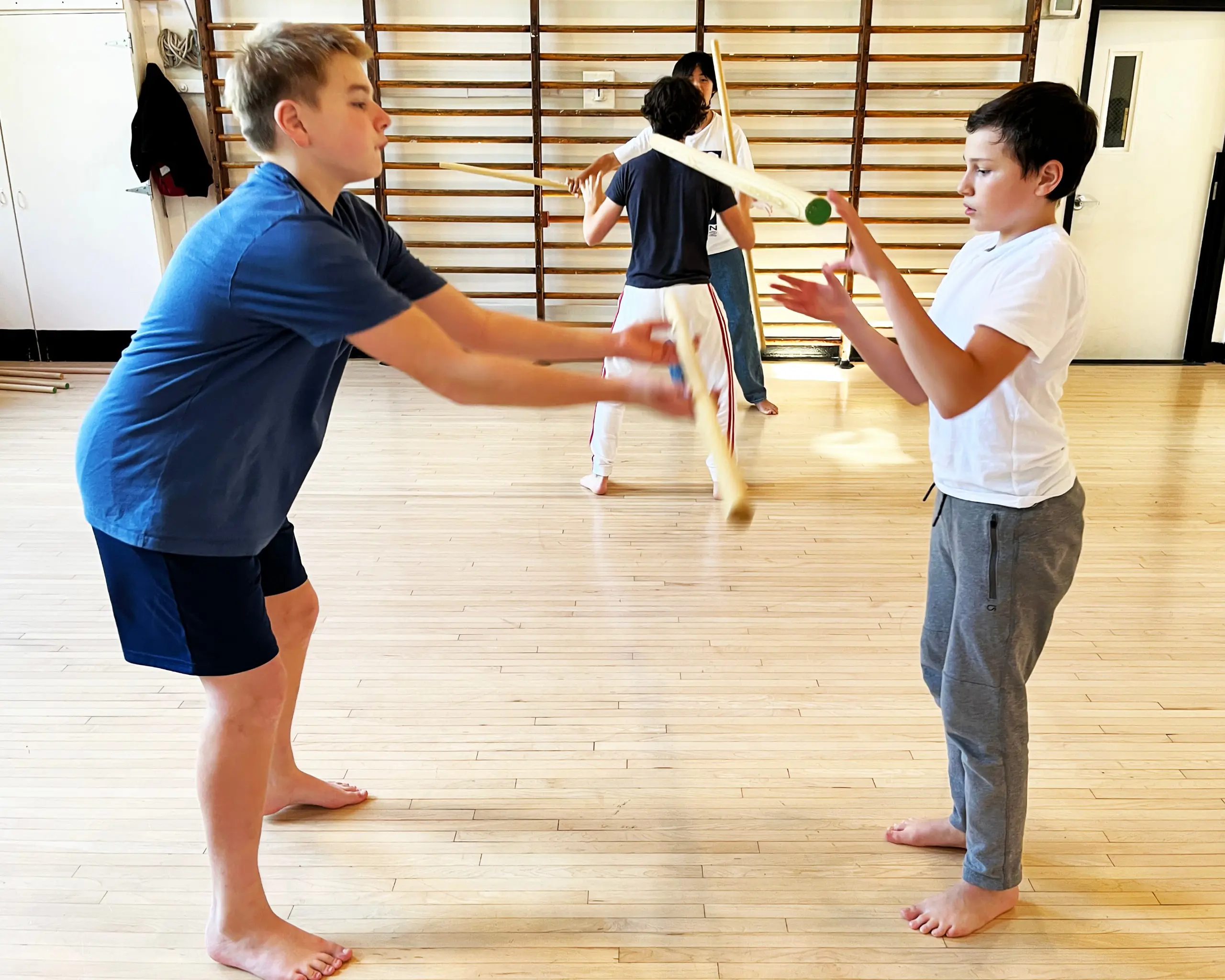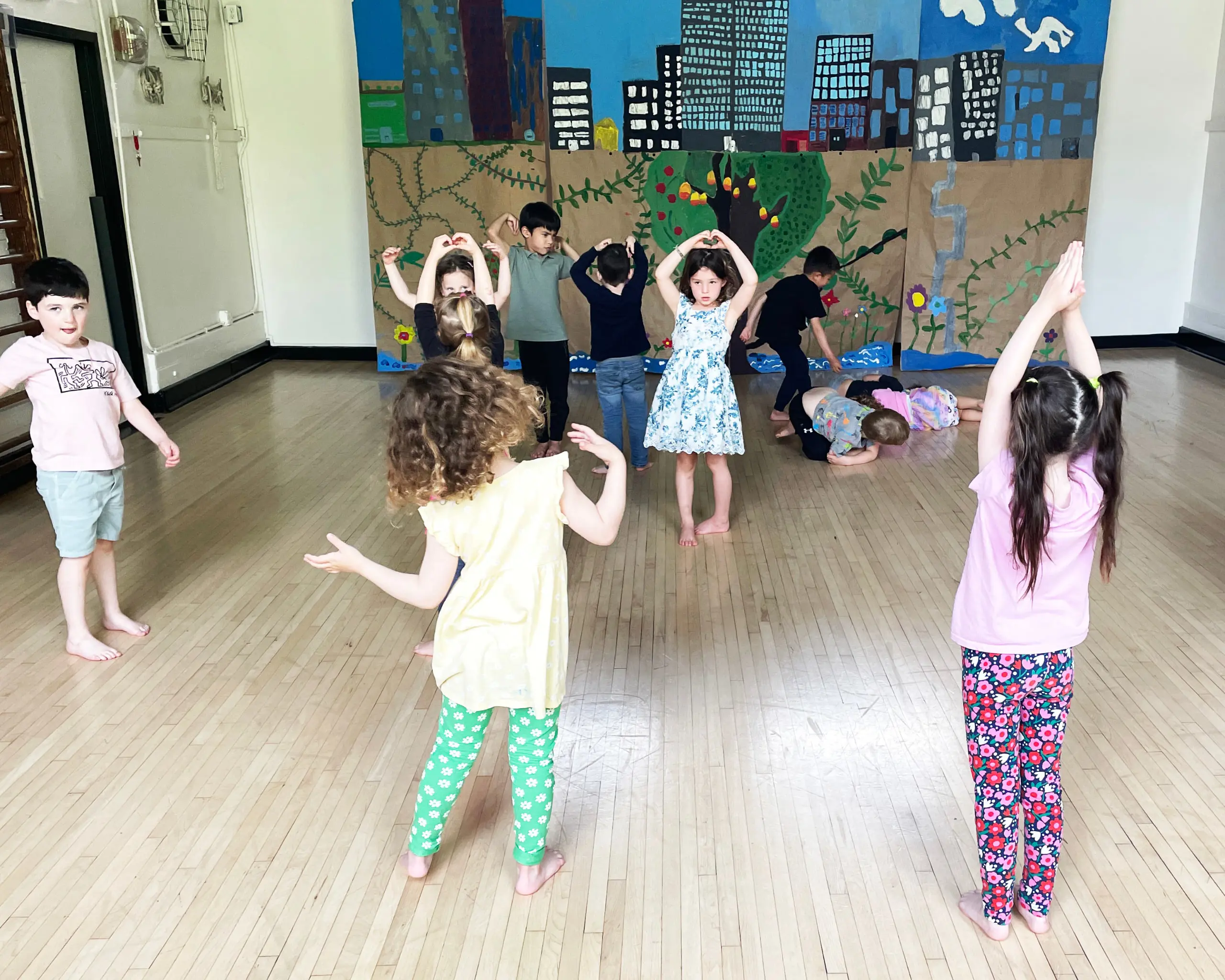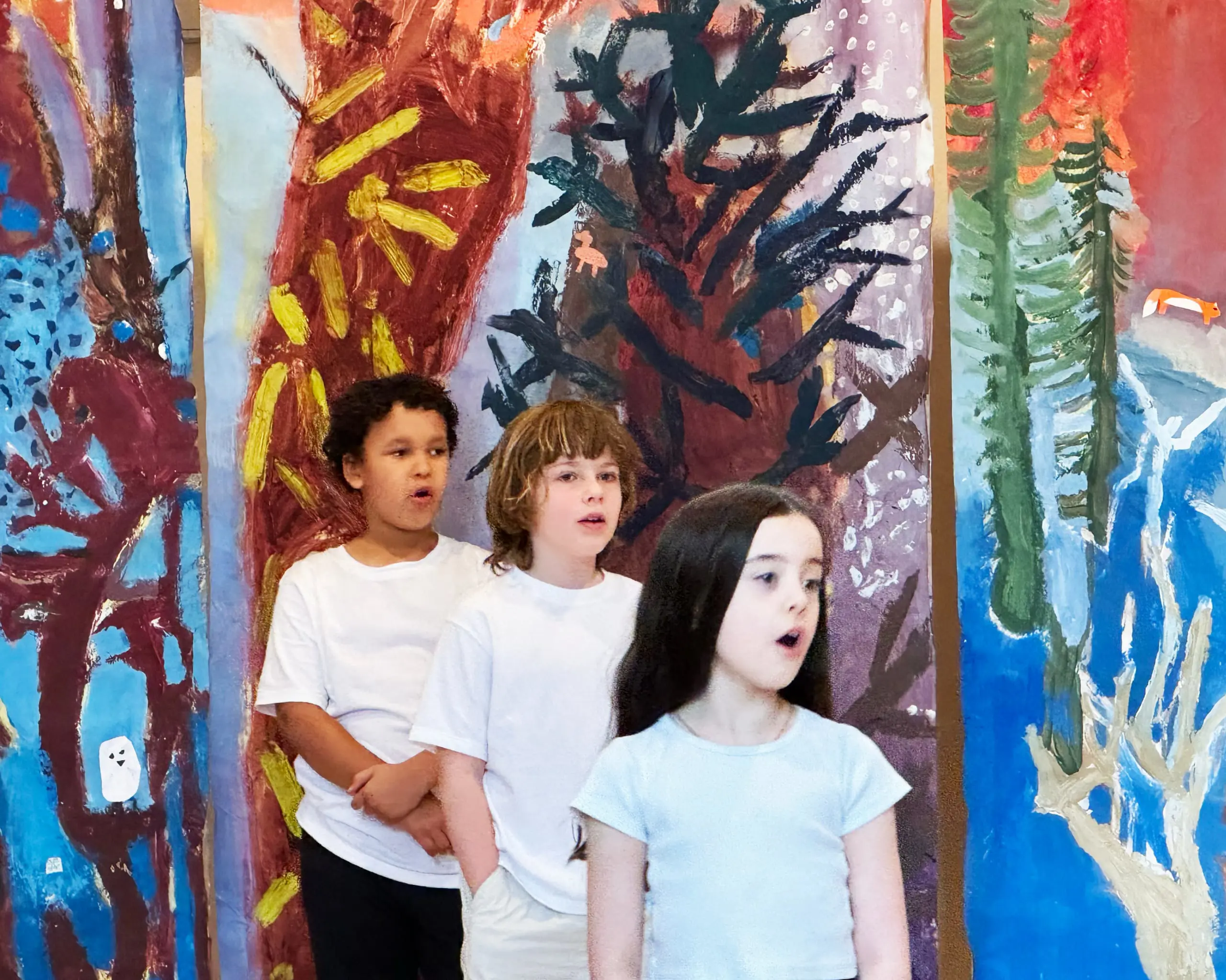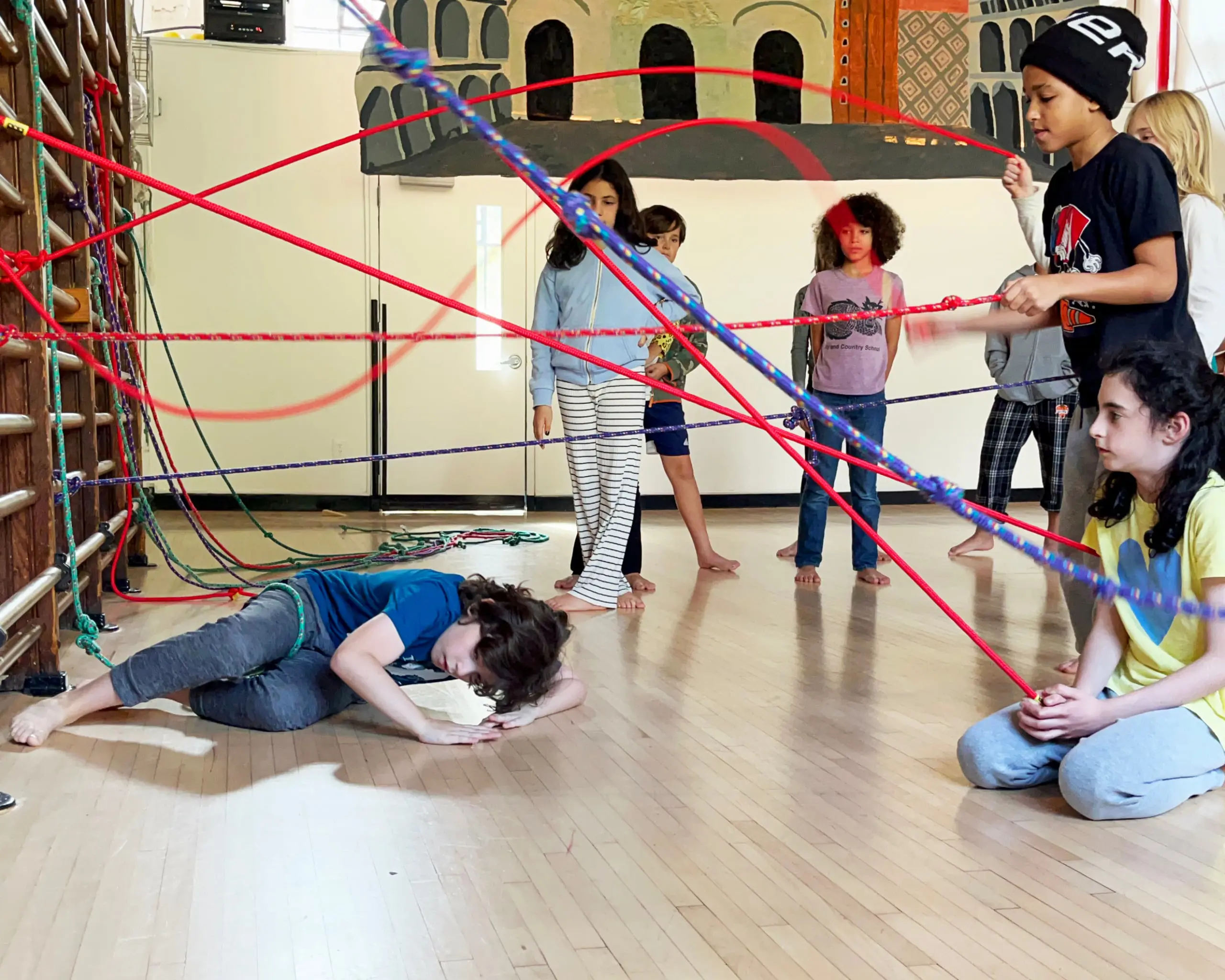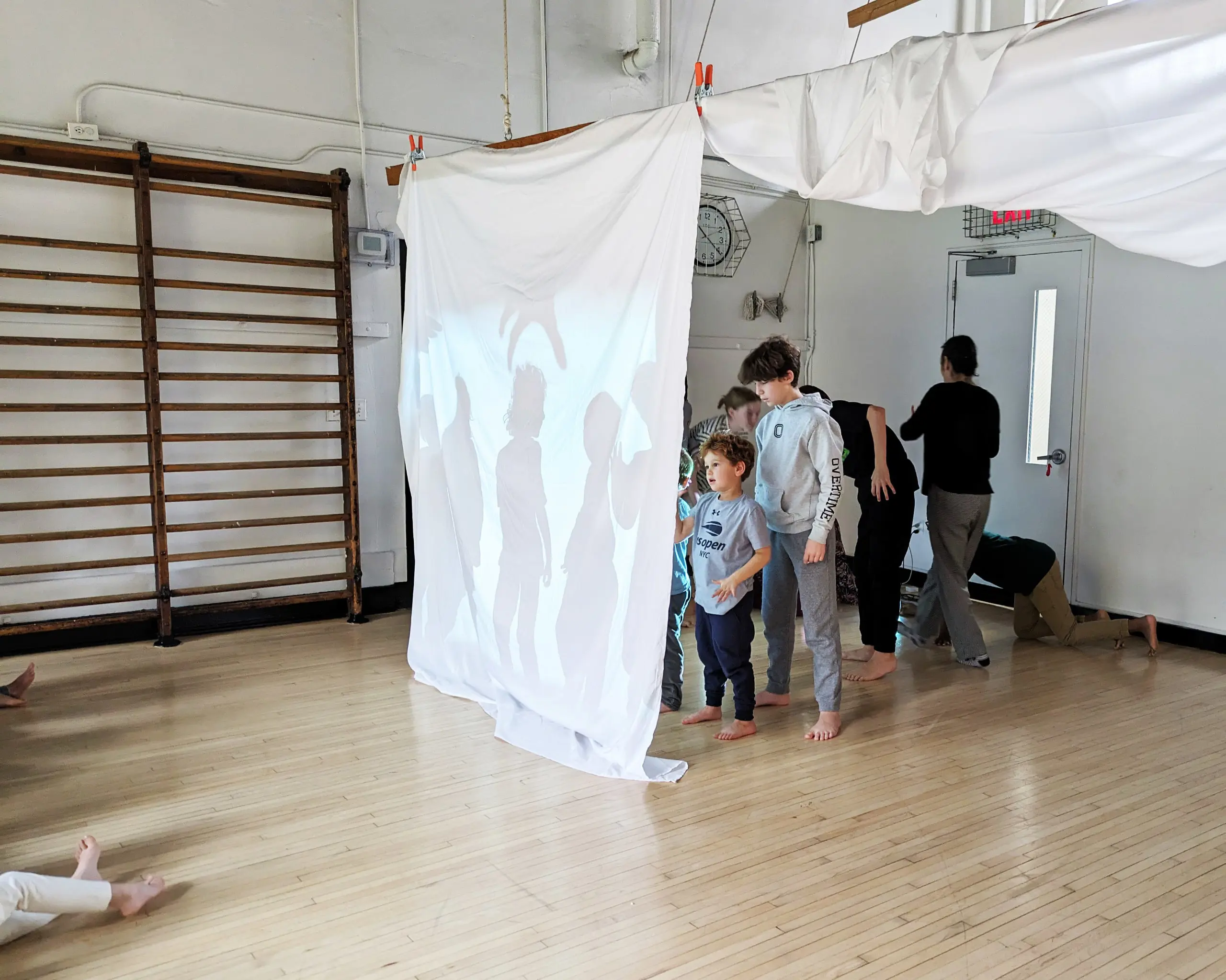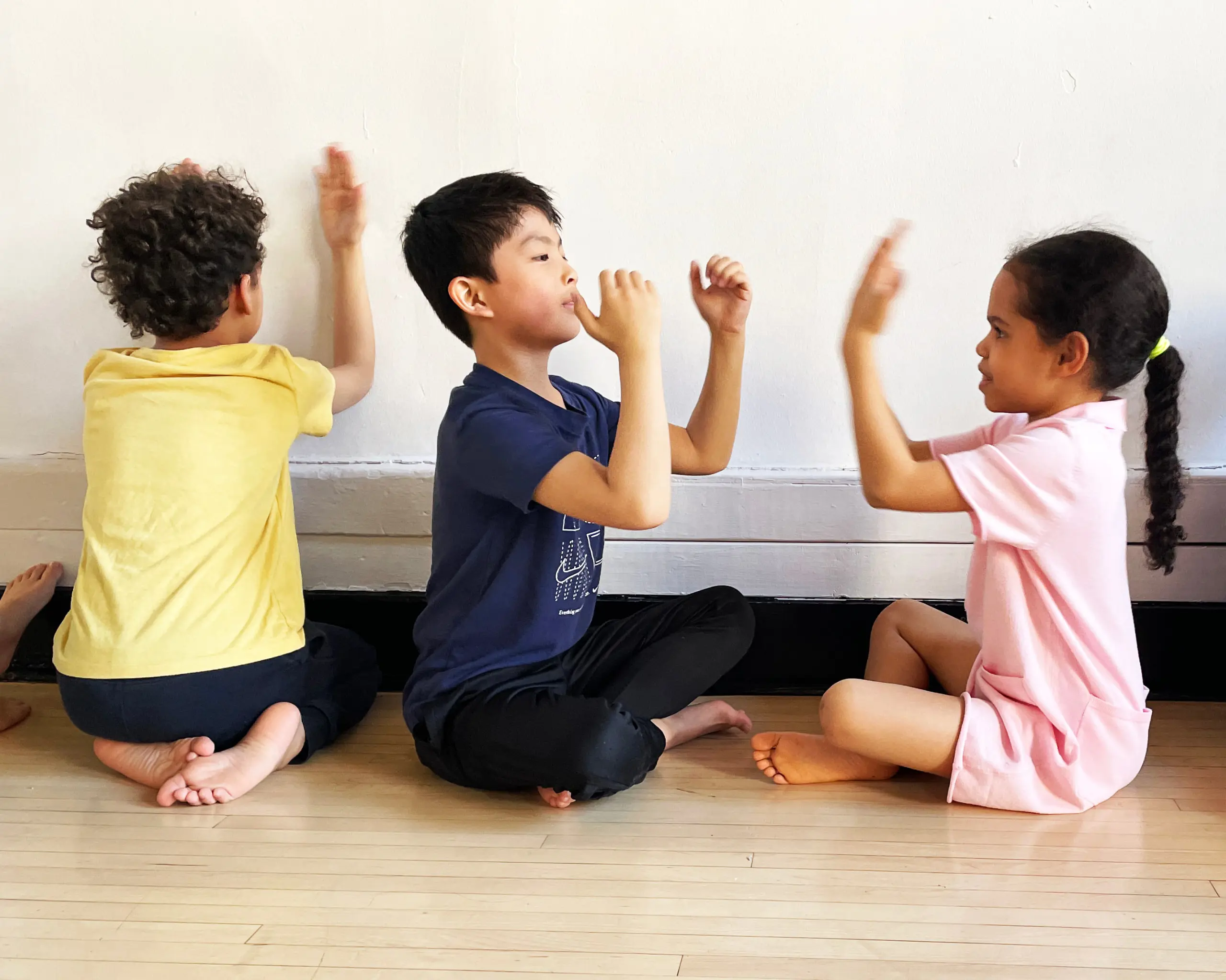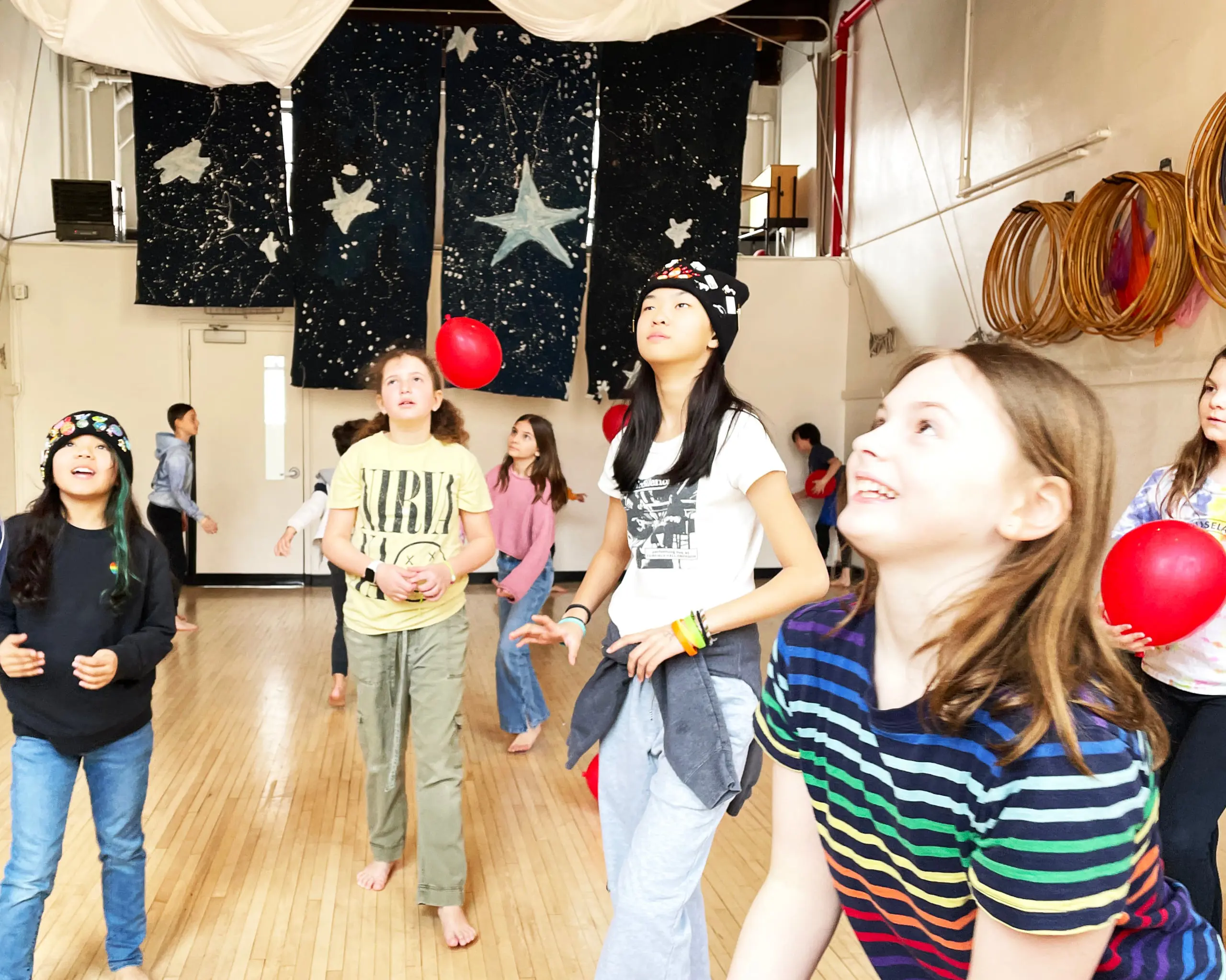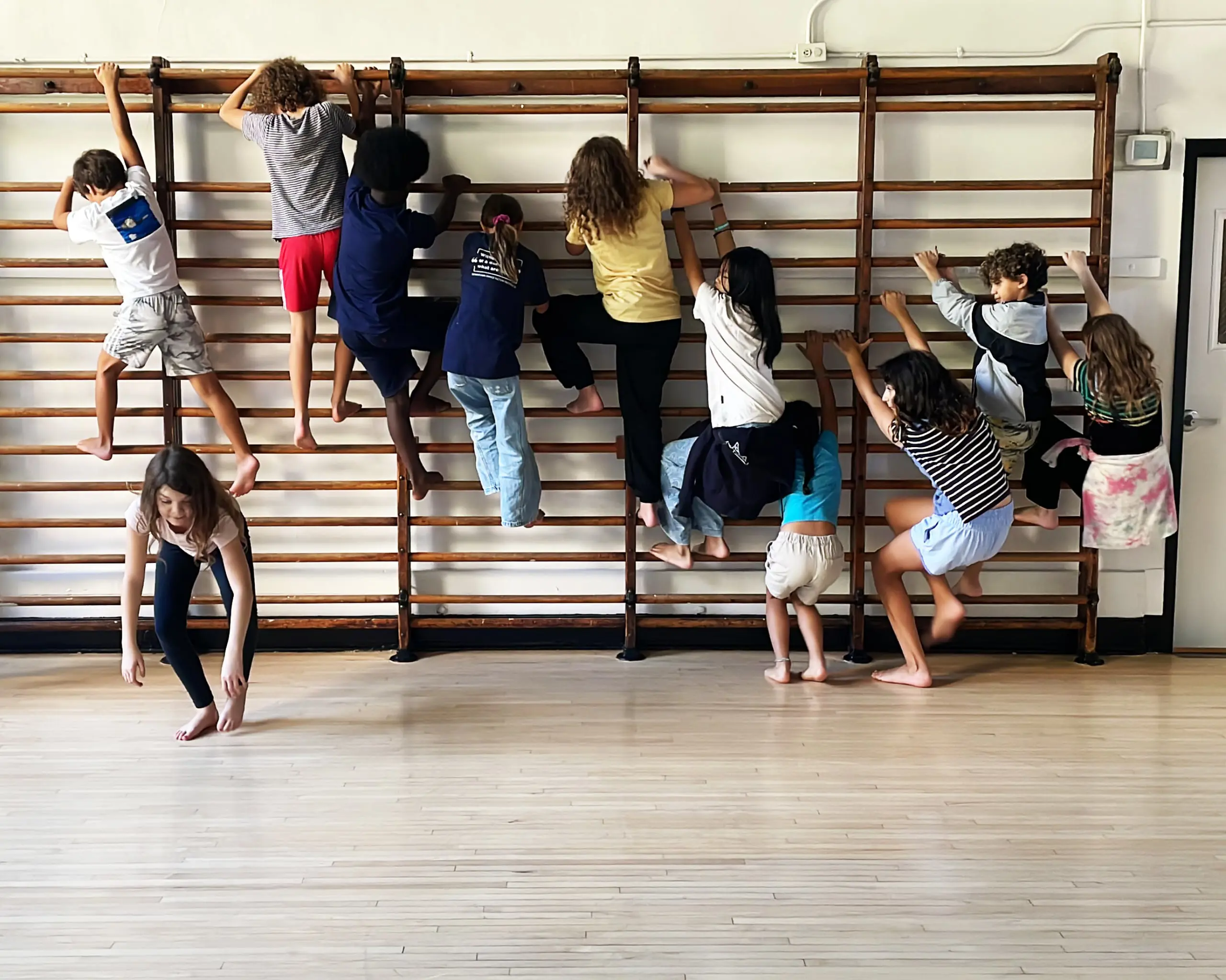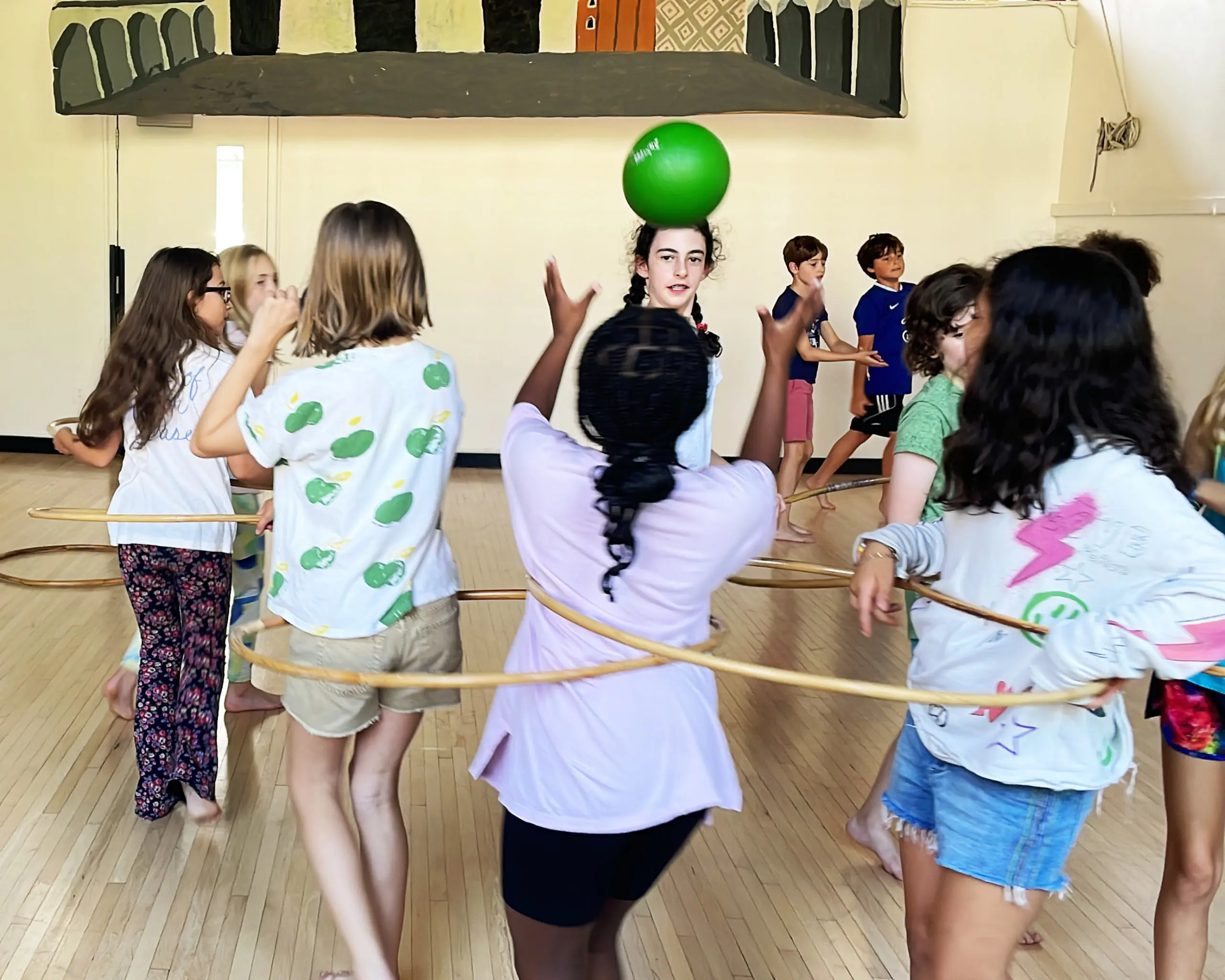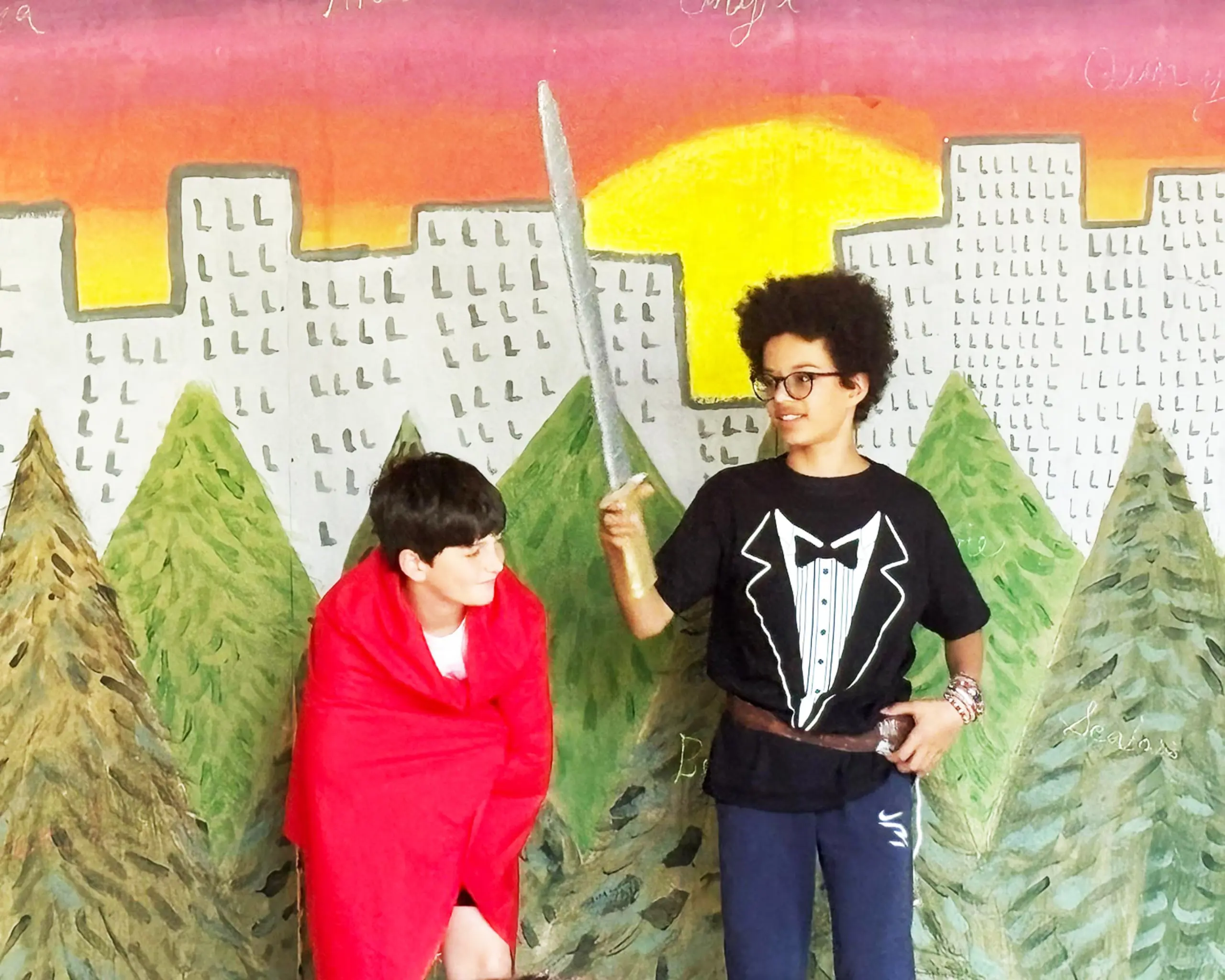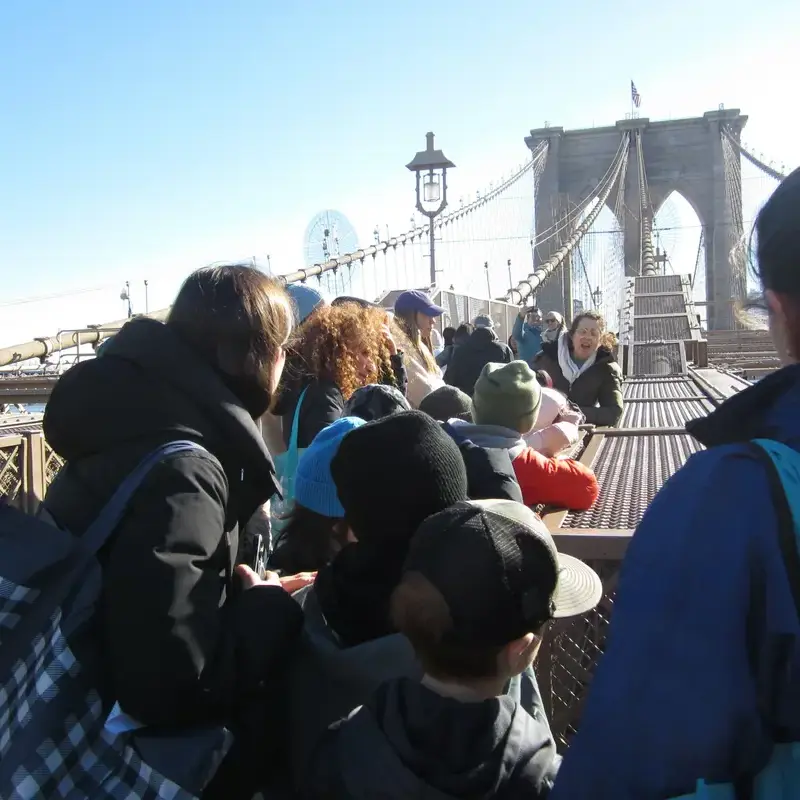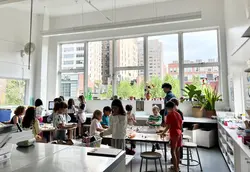Uniquely C&C
Blocks
City and Country School was founded on the groundbreaking principle that children learn best through play. Recognizing that hands-on materials are essential for young minds to express and explore their ideas, Pratt designed her own set of building blocks in 1913, featuring proportional units and endless possibilities, which have since become an indispensable tool in classrooms worldwide. These blocks not only facilitate creative thinking and problem-solving but also introduce foundational mathematical and scientific concepts.
Early childhood is a time of discovery and play, and blocks are perfect tools for young learners. Starting at the age of two, children experiment with balance, weight, and design concepts through daily block use. They explore mathematical relationships, patterns, and fractional substitutions, integrating dramatic play by creating familiar structures like skyscrapers, airports, and farms.
In kindergarten, first, and second grade, the Blocks Program evolves. Children plan and build more complex structures, often keeping them up for weeks. They work in groups, researching and constructing reality-based buildings, like Grand Central Station, Notre Dame, or the Brooklyn Bridge, reflecting their growing knowledge of the city and the world. Research skills are developed via trips and library use. Math concepts like symmetry, patterns, measurement, and fractions are solidified through hands-on experiences. Block work also integrates geography, language arts, science, woodworking, and art, fostering creativity and intellectual, physical, social, and emotional development.
Learn more:
 |
 |
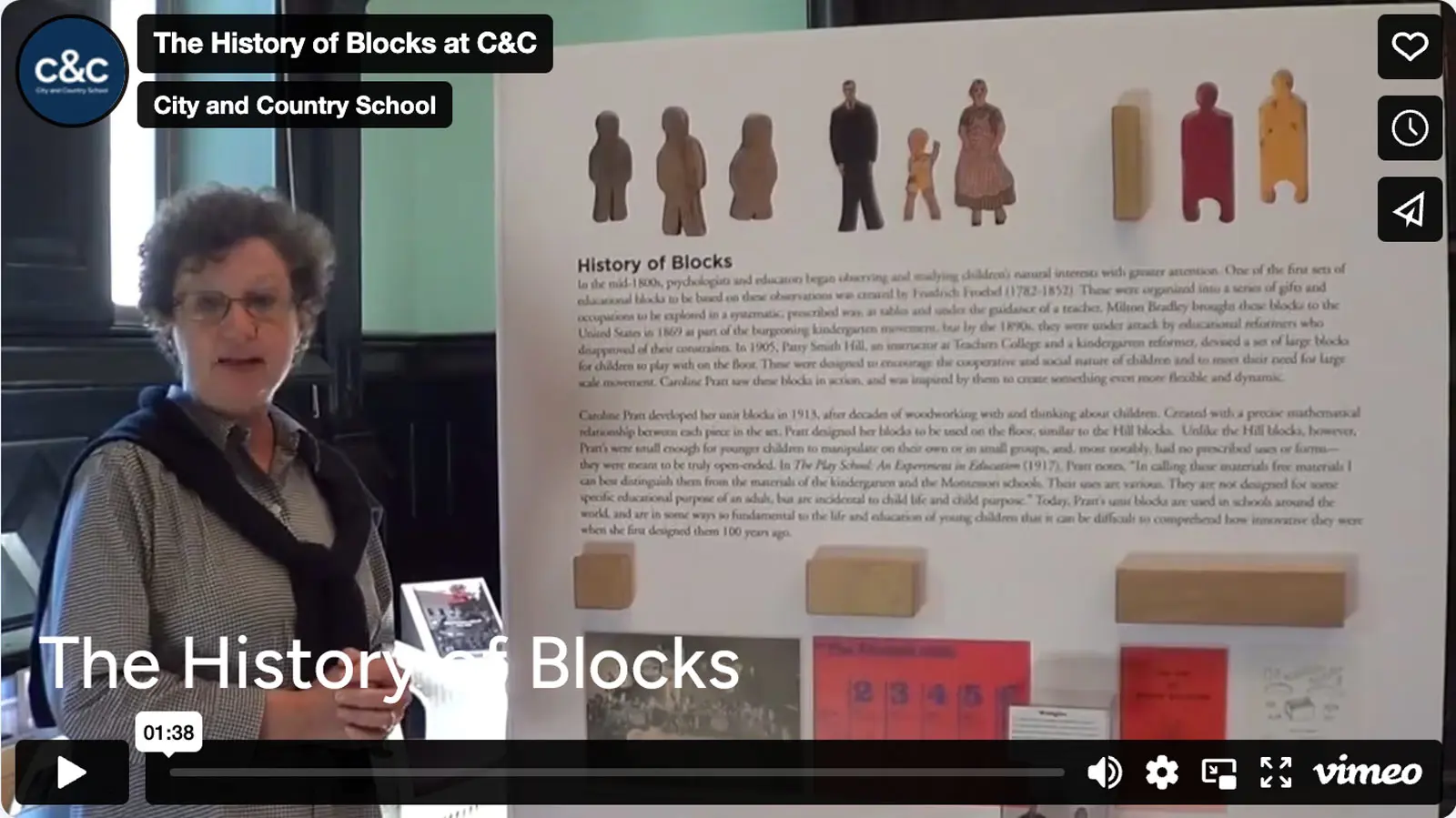 |
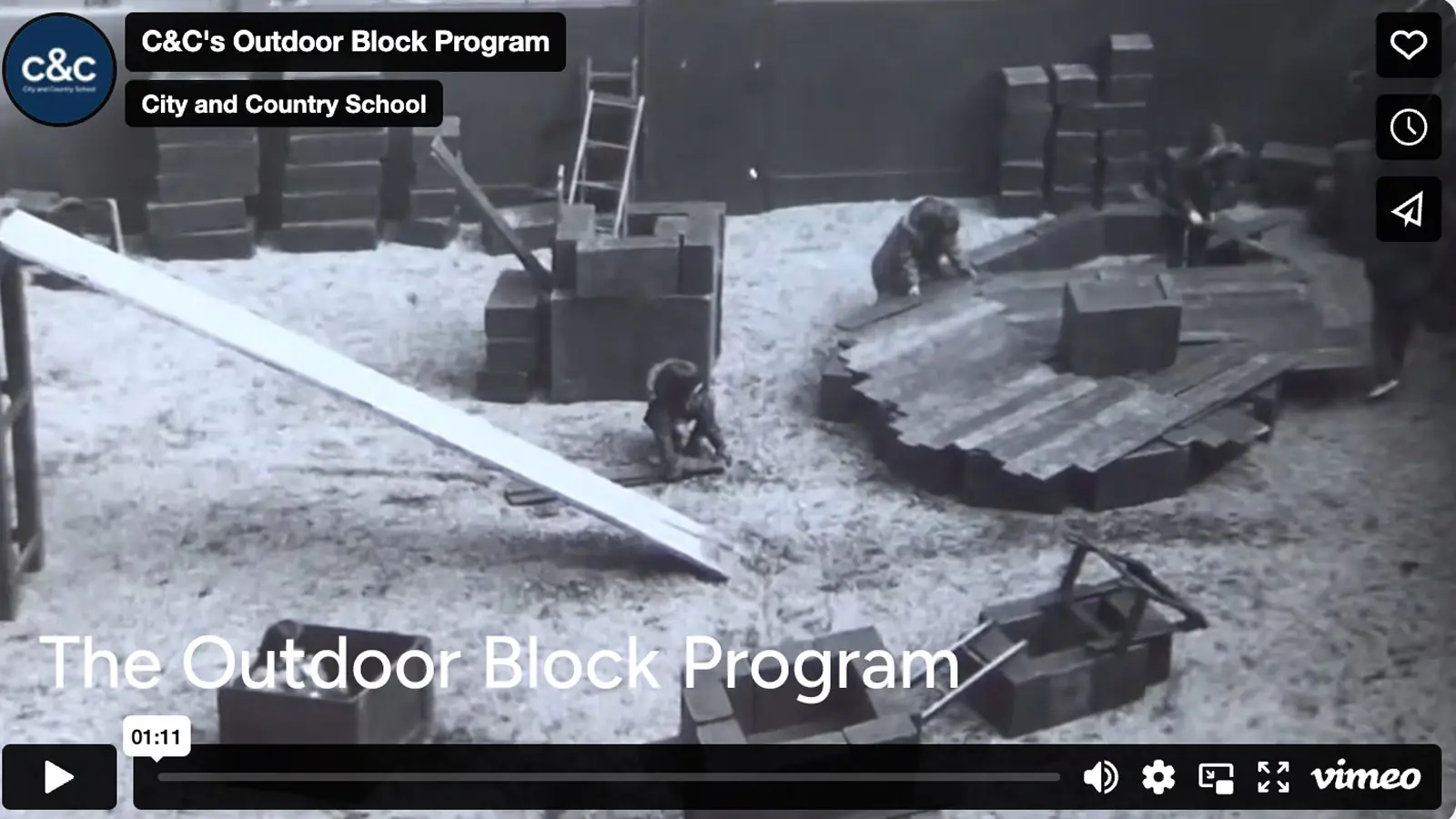 |
Jobs
As the school grew in the early 1920s, Caroline Pratt saw the need to complement the blocks program for older students. She realized these children were ready for real-life responsibilities and meaningful tasks, leading to the creation of the C&C Jobs Program. Students in third through eighth grade took on essential roles that contributed to the school'ss community, applying their academic knowledge in practical ways. This program instilled a sense of responsibility, collaboration, and purpose, making learning relevant and impactful.
Today, the Jobs Program remains a cornerstone of the C&C curriculum, preparing students for the complexities of the modern world. By integrating academics with real-world tasks like how to open and operate the school store, students learn to navigate challenges, work together, and understand the value of their contributions, empowering them to become thoughtful, capable, and engaged citizens.
Hear from our students:
 |
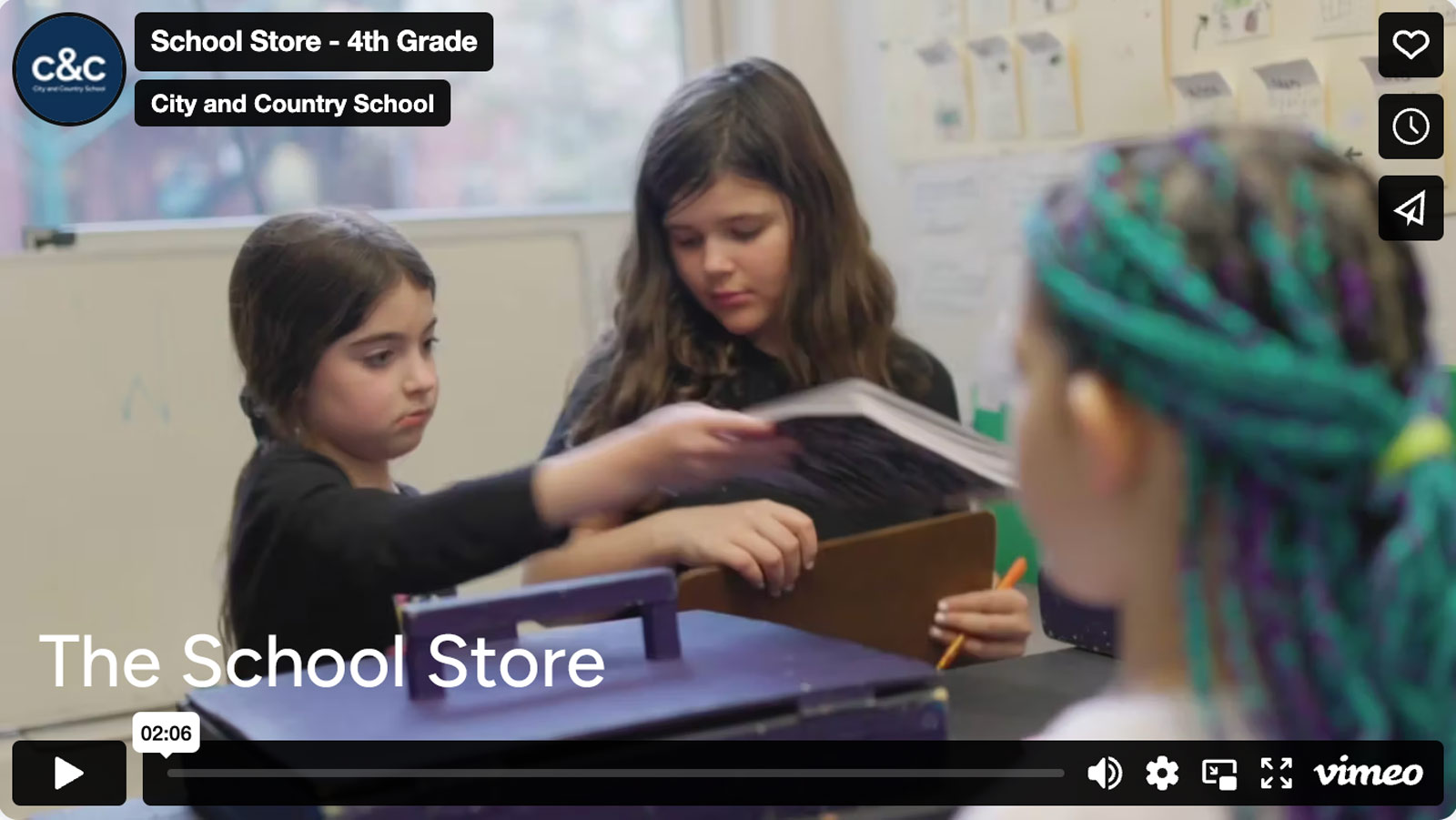 |
 |
 |
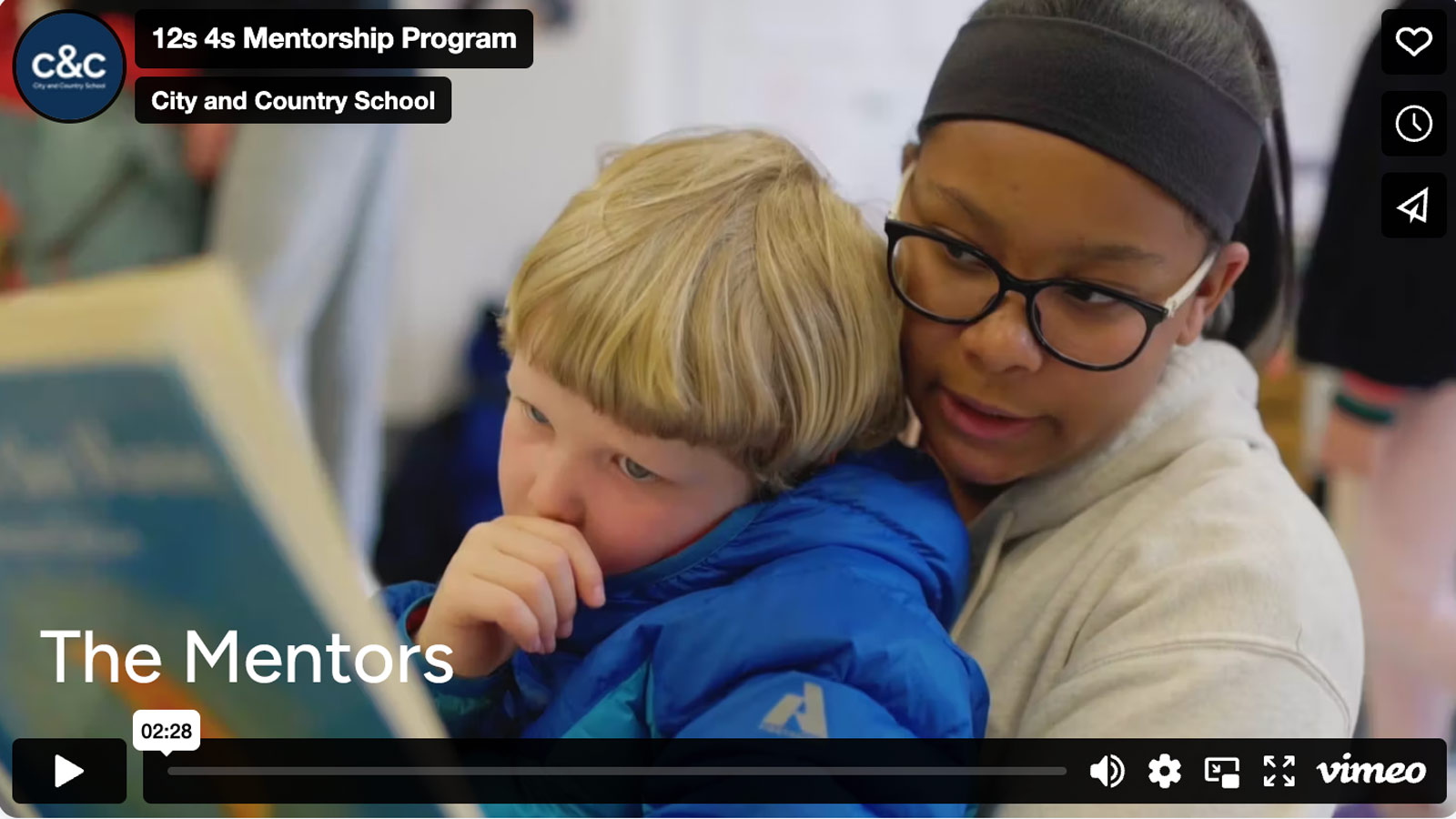 |
 |
Rhythms
In the 1920s, Ruth Doing created Rhythms at City and Country, a unique program where children run, leap, and skip to live piano music, exploring new worlds through motion. Guided by the Rhythms Teacher and carefully chosen live piano music, kids move with spontaneity and creativity, developing coordination and enhancing mind-body harmony. Ms. Doing believed that “every child has their own inner rhythm.”
Later in the 20th century, neurological science and child development research confirmed what early educators like Doing intuited. Engaging in rhythmic activities stimulates the brain, enhancing neural connections and promoting cognitive development. It aids in the development of the cerebellum, crucial for motor control and coordination, and activates the brain's reward system, releasing dopamine, which boosts attention and motivation.
Today, Rhythms is a core part of the C&C experience as it allows children to embody the curriculum and develop individual senses of creativity. In a spacious room, children engage in movement, dramatic play, and group dynamics. Using materials like balls, hoops, ropes, scarves, and balloons, they explore gross motor skills, rhythmic awareness, and relaxation techniques. Children aged 3 through 2nd grade bring themes from their studies or trips into the Rhythms Room, filling it with flora, fauna, and man-made objects. In 3rd through 8th grade, students use Rhythms to explore historical events and scientific phenomena through dramatic play. They become playmakers, scene painters, costume designers, musicians, dancers, authors, and actors, embodying and projecting their learning through creative movement.
This immersive approach enhances physical and emotional development, strengthens memory and learning, and demonstrates that movement and rhythm are integral to education.
